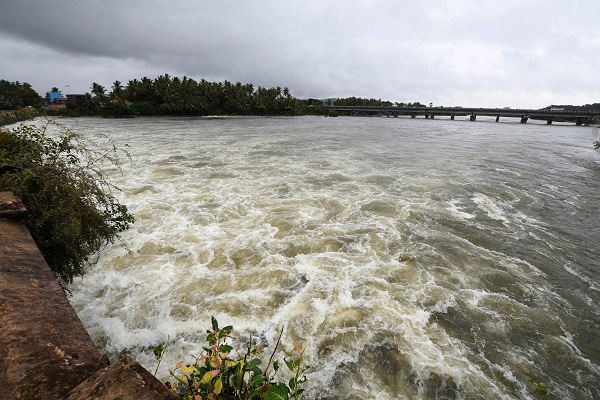New Delhi, (Samajweekly) Large reservoirs in Punjab and Himachal Pradesh, among others, have significantly less water storage at the end of monsoon season compared to last year and, also, to 10 years’ average, according to an analysis by the Central Water Commission (CWC).
The CWC monitors live storage status of 130 reservoirs across the country on a weekly basis. The total live storage capacity of these 130 reservoirs is 171.958 BCM (billion cubic metres), which is about 66.70 per cent of the live storage capacity of 257.812 BCM (storage capacity reduced over the years because of various reasons).
As on October 21, Punjab reservoirs’ storage has shows a departure of minus 31 per cent while for Himachal Pradesh, reservoirs’ storage has shown a departure of minus 27 per cent. Odisha (minus 14 per cent), Nagaland (minus 6 per cent) and Madhya Pradesh (minus 2 per cent) are the three other states that have shown less storage than normal.
Among other states, the storage position of Himachal Pradesh and Punjab – four reservoirs – matters the most as farmers from not just those two states but also from Haryana, a portion of Rajasthan and in Delhi – apart from drinking water needs of all these areas, are dependent on these reservoirs, not to mention the hydropower needs.
These four reservoirs have overall storage that is generally adequate for the requirement.
“Bhakra Nangal dam has carry over storage, so, the winter irrigation requirement may not be significantly impacted,” said former CWC chairperson A.B. Pandya.
Referring to the fact that in Punjab, about 25 per cent of farming is dependent on the canals from these dam reservoirs, Ranjit Singh Ghuman, Professor of Eminence, Guru Nanak Dev University, Amritsar, said: “The lower levels of these reservoirs may or may not affect hydropower generation but the irrigation canals will definitely have lower discharges.”
Meanwhile, thanks to the bountiful rains in September, the live storage available in the 130 reservoirs is 141.927 BCM, which is 83 per cent of total live storage capacity of these reservoirs. Compared to this, the last year’s live storage available in these reservoirs for the corresponding period was 150.789 BCM (94 per cent) and the average of last 10 years live storage was 131.305 BCM (108 per cent), the CWC data showed.
Reservoirs in north India (Himachal, Punjab and Rajasthan) have 65 per cent storage, which is less than 69 per cent from last year and 81 per cent of the 10 years’ average; reservoirs in east India (Jharkhand, Odisha, West Bengal, Tripura and Nagaland) have 72 per cent storage, which is less than 80 per cent from last year and 79 per cent of the 10 years’ average, reservoirs in west India (Gujarat and Maharashtra) have 87 per cent storage, which is less than 94 per cent from last year but more than 74 per cent of the 10 years’ average.
Similarly, reservoirs in central India (Uttar Pradesh, Uttarakhand, Madhya Pradesh and Chhattisgarh) have 83 per cent storage, which is less than 90 per cent from last year but slightly more than 81 per cent of the 10 years’ average while reservoirs from South India (Andhra Pradesh, Telangana, Karnataka, Tamil Nadu, Kerala) have 90 per cent storage, which is less than 92 per cent from last year but substantially more than 71 per cent of the 10 years’ average.
States having better storage (in percentage terms) than last year for corresponding period include Rajasthan, Jharkhand, West Bengal, Maharashtra, Uttarakhand, and Kerala, and only one state, Telangana has equal storage (in percentage terms) to last year for corresponding period.
States having lesser storage (in percentage terms) than last year for corresponding period include Himachal Pradesh, Punjab, Odisha, Tripura, Nagaland, Gujarat, Uttar Pradesh, Madhya Pradesh, Chhattisgarh, Andhra Pradesh, Karnataka, and Tamil Nadu.
The CWC data also showed that the numbers of reservoirs having storage more than last year are 29 and reservoirs having storage more than average of last ten years are 94.










